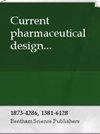Association of Parity with the Risks of Gestational Diabetes and Macrosomia: A Retrospective Cohort Study in Nanjing, China
IF 2.6
4区 医学
Q2 PHARMACOLOGY & PHARMACY
引用次数: 0
Abstract
Background: After implementing the two-child policy, more Chinese women who had a previous delivery had their second child. Nevertheless, the impacts of parity on Gestational Diabetes (GDM) and macrosomia have not been fully confirmed. Therefore, we aimed to analyse the characteristics of pregnancy by parity and evaluate the association of parity with risks of GDM/macrosomia in a Chinese population Methods: A total of 193,410 pregnant women (including 148,293 primiparae and 45,117 multiparae) with complete information were included. Univariate and multivariate logistic regression analyses were used to examine the association between parity and risks of GDM/macrosomia. Results: With the gradual implementation of the two-child policy, the proportion of multiparae increased rapidly and then decreased slightly. Multiparae were more likely to be older and have higher intrapartum BMI, as compared to primiparae (P < 0.001). Univariate regression analyses suggested that parity could increase the risks of GDM and macrosomia; while after adjustment, the association between parity and GDM risk disappeared, and the effects of parity on macrosomia risk and birth weight of babies were also weakened. Further, stratified analysis showed that parity only increased the risk of GDM in women over 30 years, and the effects of parity on macrosomia risk and birth weight were more pronounced among women over 30 years compared to women under 30 years. Conclusion: Parity was not associated with GDM risk, but mildly associated with macrosomia risk. Particular attention should be paid to multiparae with advanced age to reduce the risks of GDM and macrosomia妊娠期糖尿病和巨大儿风险与胎次的关系:中国南京的一项回顾性队列研究
背景:二胎政策实施后,更多曾生育过一胎的中国妇女生育了第二胎。然而,奇数妊娠对妊娠期糖尿病(GDM)和巨大儿的影响尚未得到充分证实。因此,我们的目的是在中国人群中分析不同奇数妊娠的特点,并评估奇数妊娠与妊娠期糖尿病/巨大儿风险的关联:共纳入 193 410 名信息完整的孕妇(包括 148 293 名初产妇和 45 117 名多胎妊娠妇女)。采用单变量和多变量逻辑回归分析来研究奇偶性与 GDM/乳腺增生风险之间的关系。结果显示随着二胎政策的逐步实施,多胎妊娠的比例迅速上升,随后略有下降。与初产妇相比,多胎妊娠者年龄更大、产时体重指数更高(P < 0.001)。单变量回归分析表明,多胎妊娠会增加患 GDM 和巨大儿症的风险;而经过调整后,多胎妊娠与 GDM 风险之间的关联消失了,多胎妊娠对巨大儿症风险和婴儿出生体重的影响也减弱了。此外,分层分析表明,只有 30 岁以上的女性才会因奇偶校验而增加患 GDM 的风险,而 30 岁以上的女性与 30 岁以下的女性相比,奇偶校验对巨型畸形风险和婴儿出生体重的影响更为明显。结论胎次与 GDM 风险无关,但与巨大儿风险有轻微关系。应特别关注高龄多胎妊娠,以降低发生 GDM 和巨大儿的风险。
本文章由计算机程序翻译,如有差异,请以英文原文为准。
求助全文
约1分钟内获得全文
求助全文
来源期刊
CiteScore
6.30
自引率
0.00%
发文量
302
审稿时长
2 months
期刊介绍:
Current Pharmaceutical Design publishes timely in-depth reviews and research articles from leading pharmaceutical researchers in the field, covering all aspects of current research in rational drug design. Each issue is devoted to a single major therapeutic area guest edited by an acknowledged authority in the field.
Each thematic issue of Current Pharmaceutical Design covers all subject areas of major importance to modern drug design including: medicinal chemistry, pharmacology, drug targets and disease mechanism.

 求助内容:
求助内容: 应助结果提醒方式:
应助结果提醒方式:


